Bookworm
Published in Book Reviews, Issue 1(Jan/Feb 2012), Reviews, Volume 20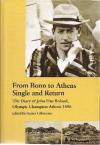 The Ulster Historical Foundation published eight new titles in 2011 on a very wide range of subjects—everything from George Sigerson (George Sigerson: poet, patriot,
The Ulster Historical Foundation published eight new titles in 2011 on a very wide range of subjects—everything from George Sigerson (George Sigerson: poet, patriot, 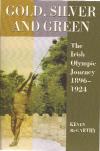 scientist and scholar by Ken McGilloway, 168pp, €19.99/£16.99 hb, ISBN 9781903688212), the Gaelic scholar, to George Best (George Best will not be playing today, edited by Barbara McNarry, 176pp, €29.99/£24.99 hb, ISBN 9781903688922), footballing legend. The topics range across four centuries of Irish history: Strabane barony during the Ulster Plantation, 1607–1641, edited by Bob Hunter (96pp, €10.99/£8.99 pb, ISBN 9781903688953); ‘A very independent county’: parliamentary elections and politics in County Armagh, 1750–1800 by Neil McGleenon (336pp, €29.99/£24.99 hb, ISBN 9781903688939); Portrait of an industrial city: ‘Clanging Belfast’, 1750–1914 by Steve Royle (172pp, €12.99/£9.99 pb, ISBN 9781908448064); ’Them wild woods’: The transatlantic letters of an Irish Quaker family, 1818–1877, edited by Bill Jackson (424pp, €29.99/£24.99, ISBN 9781908448002); and A chronicle of Comber: the town of Thomas Andrews, shipbuilder, 1873–1912 by Desmond Rainey and Laura Spence (208pp, €10.99/£9.99 pb, ISBN 9781908448071). And with the commemoration of historical
scientist and scholar by Ken McGilloway, 168pp, €19.99/£16.99 hb, ISBN 9781903688212), the Gaelic scholar, to George Best (George Best will not be playing today, edited by Barbara McNarry, 176pp, €29.99/£24.99 hb, ISBN 9781903688922), footballing legend. The topics range across four centuries of Irish history: Strabane barony during the Ulster Plantation, 1607–1641, edited by Bob Hunter (96pp, €10.99/£8.99 pb, ISBN 9781903688953); ‘A very independent county’: parliamentary elections and politics in County Armagh, 1750–1800 by Neil McGleenon (336pp, €29.99/£24.99 hb, ISBN 9781903688939); Portrait of an industrial city: ‘Clanging Belfast’, 1750–1914 by Steve Royle (172pp, €12.99/£9.99 pb, ISBN 9781908448064); ’Them wild woods’: The transatlantic letters of an Irish Quaker family, 1818–1877, edited by Bill Jackson (424pp, €29.99/£24.99, ISBN 9781908448002); and A chronicle of Comber: the town of Thomas Andrews, shipbuilder, 1873–1912 by Desmond Rainey and Laura Spence (208pp, €10.99/£9.99 pb, ISBN 9781908448071). And with the commemoration of historical
anniversaries looming, the involvement of Belfast Catholics 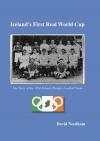 in the First World War is explored in a new enlarged edition of The 6th Connaught Rangers: Belfast nationalists and
in the First World War is explored in a new enlarged edition of The 6th Connaught Rangers: Belfast nationalists and
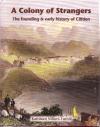 the Great War (128pp, £4.99 pb, ISBN 9781903688359).Also out in a second edition is the Atlas of the Irish rural landscape, edited by F.H.A. Aalen, Kevin Whelan and Matthew Stout (Cork University Press, 432pp, €59/£55 hb, ISBN 9781859184592). When it first appeared in 1997, it was hailed as a pioneering volume in increasing appreciation of the Irish landscape as a crucial component of national heritage. The sumptuous quality of its design, the cutting edge cartography and the clarity of its prose ensured that it became an award-winning volume, widely praised internationally. It sold over 21,000 copies and was reprinted six times. This second edition is far from a cosmetic reissue. At least a third of the content is entirely new. This includes a complete rewriting of the contemporary section to take account of the Celtic Tiger. (Can we expect another new edition dealing with the latest addition to the Irish rural landscape—the ghost estate?) And there are six fresh regional case-studies: Tory Island, Co. Donegal; the Wicklow uplands; Inistiogue, Co. Kilkenny; Aughris, Co. Sligo; Clonfert, Co. Galway; and Point Lance, Newfoundland. There is a new cover, many
the Great War (128pp, £4.99 pb, ISBN 9781903688359).Also out in a second edition is the Atlas of the Irish rural landscape, edited by F.H.A. Aalen, Kevin Whelan and Matthew Stout (Cork University Press, 432pp, €59/£55 hb, ISBN 9781859184592). When it first appeared in 1997, it was hailed as a pioneering volume in increasing appreciation of the Irish landscape as a crucial component of national heritage. The sumptuous quality of its design, the cutting edge cartography and the clarity of its prose ensured that it became an award-winning volume, widely praised internationally. It sold over 21,000 copies and was reprinted six times. This second edition is far from a cosmetic reissue. At least a third of the content is entirely new. This includes a complete rewriting of the contemporary section to take account of the Celtic Tiger. (Can we expect another new edition dealing with the latest addition to the Irish rural landscape—the ghost estate?) And there are six fresh regional case-studies: Tory Island, Co. Donegal; the Wicklow uplands; Inistiogue, Co. Kilkenny; Aughris, Co. Sligo; Clonfert, Co. Galway; and Point Lance, Newfoundland. There is a new cover, many
new maps and photographs, a listing of the top 50 books on 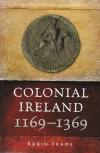 the Irish landscape and a guide to the best websites.
the Irish landscape and a guide to the best websites.
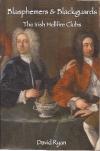 Arnold Horner’s Mapping Sligo in the early 19th century (Wordwell Books, 86pp, €35 hb, ISBN 9781905569526) is a more historical atlas, based on the six six-inches-to-one-mile engraved sheets compiled for the county grand jury by the prolific surveyor and roads engineer William Larkin c. 1800 and first published in 1809. Published nearly two decades before similar Ordnance Survey maps, and appearing a generation before the Great Famine, Larkin’s maps have a particular interest for local studies. Beautifully produced and at a large format, this is the third of Larkin’s county maps (after King’s County and Meath) to be published by Wordwell.For lovers of the often troubling poetry of Louis MacNeice, his father is a reassuring presence: solid, sober, pious yet tolerant, a Church of Ireland clergyman unafraid to reject the Ulster Covenant of 1912, denounce sectarianism and even espouse Irish nationalism. Rejecting his father’s puritanism, Louis MacNeice is pictured as inheriting his liberalism and strong sense of Irishness. But as David Fitzpatrick discovered
Arnold Horner’s Mapping Sligo in the early 19th century (Wordwell Books, 86pp, €35 hb, ISBN 9781905569526) is a more historical atlas, based on the six six-inches-to-one-mile engraved sheets compiled for the county grand jury by the prolific surveyor and roads engineer William Larkin c. 1800 and first published in 1809. Published nearly two decades before similar Ordnance Survey maps, and appearing a generation before the Great Famine, Larkin’s maps have a particular interest for local studies. Beautifully produced and at a large format, this is the third of Larkin’s county maps (after King’s County and Meath) to be published by Wordwell.For lovers of the often troubling poetry of Louis MacNeice, his father is a reassuring presence: solid, sober, pious yet tolerant, a Church of Ireland clergyman unafraid to reject the Ulster Covenant of 1912, denounce sectarianism and even espouse Irish nationalism. Rejecting his father’s puritanism, Louis MacNeice is pictured as inheriting his liberalism and strong sense of Irishness. But as David Fitzpatrick discovered
while researching ‘Solitary and wild’: Frederick MacNeice  and the salvation of Ireland (Lilliput Press, 440pp, €40 hb, ISBN 9781843511946), there was an inconvenient fact. Frederick MacNeice (1866–1942) was not a Home Ruler but an all-Ireland unionist, who for many years was an enthusiastic Orangeman in Dublin and then Ulster. In later life, especially as bishop of Down after 1934, he set aside these connections to pursue intercommunal peace and tolerance in Belfast and beyond. The
and the salvation of Ireland (Lilliput Press, 440pp, €40 hb, ISBN 9781843511946), there was an inconvenient fact. Frederick MacNeice (1866–1942) was not a Home Ruler but an all-Ireland unionist, who for many years was an enthusiastic Orangeman in Dublin and then Ulster. In later life, especially as bishop of Down after 1934, he set aside these connections to pursue intercommunal peace and tolerance in Belfast and beyond. The 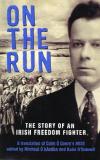 relationship between father and son is re-examined, and several well-known poems are reinterpreted in the light of fresh evidence. Using unfamiliar archives and local newspapers, as well as the writings of both father and son, ‘Solitary and wild’ reconstructs the disparate worlds in which Frederick MacNeice lived and worked.While ‘going to the pictures’ or cinema is generally regarded as a twentieth-century activity, husband and wife team Kevin andEmer Rockett’s Magic lantern, panorama and moving picture shows in Ireland, 1786–1909 (Four Courts Press, 454pp, €45 hb, ISBN 9781846823152) opens up the previously unexplored area of Irish cinema’s pre-history. Without these cultural forms, they argue, many developed by Irish inventors and pioneers (e.g. Galway-born Jacobite Patrick D’Arcy (1725–79); see ‘A dynamic Irishman in Paris’, HI 18.2, March/April 2010, https://www.historyireland.com //volumes/MarchApril2010/?id=114697), cinema’s subsequent moving pictures would have been unimaginable. Their companion volume, Film exhibition and distribution in Ireland, 1909–2010 (Four Courts Press, 704pp, €55 hb, ISBN 9781846823169), brings the story up to the present day. Part one looks at the business side of things, not least the siting and building of cinemas. Part two looks at alternative film exhibition practices and in particular the competing cultural
relationship between father and son is re-examined, and several well-known poems are reinterpreted in the light of fresh evidence. Using unfamiliar archives and local newspapers, as well as the writings of both father and son, ‘Solitary and wild’ reconstructs the disparate worlds in which Frederick MacNeice lived and worked.While ‘going to the pictures’ or cinema is generally regarded as a twentieth-century activity, husband and wife team Kevin andEmer Rockett’s Magic lantern, panorama and moving picture shows in Ireland, 1786–1909 (Four Courts Press, 454pp, €45 hb, ISBN 9781846823152) opens up the previously unexplored area of Irish cinema’s pre-history. Without these cultural forms, they argue, many developed by Irish inventors and pioneers (e.g. Galway-born Jacobite Patrick D’Arcy (1725–79); see ‘A dynamic Irishman in Paris’, HI 18.2, March/April 2010, https://www.historyireland.com //volumes/MarchApril2010/?id=114697), cinema’s subsequent moving pictures would have been unimaginable. Their companion volume, Film exhibition and distribution in Ireland, 1909–2010 (Four Courts Press, 704pp, €55 hb, ISBN 9781846823169), brings the story up to the present day. Part one looks at the business side of things, not least the siting and building of cinemas. Part two looks at alternative film exhibition practices and in particular the competing cultural 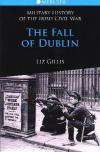 and moral agendas of the secular Irish Film Society and the Catholic-controlled National Film Institute of Ireland. Part three presents an annotated all-Ireland listing of film exhibition venues from the first screenings in Ireland in 1896. HI
and moral agendas of the secular Irish Film Society and the Catholic-controlled National Film Institute of Ireland. Part three presents an annotated all-Ireland listing of film exhibition venues from the first screenings in Ireland in 1896. HI
















